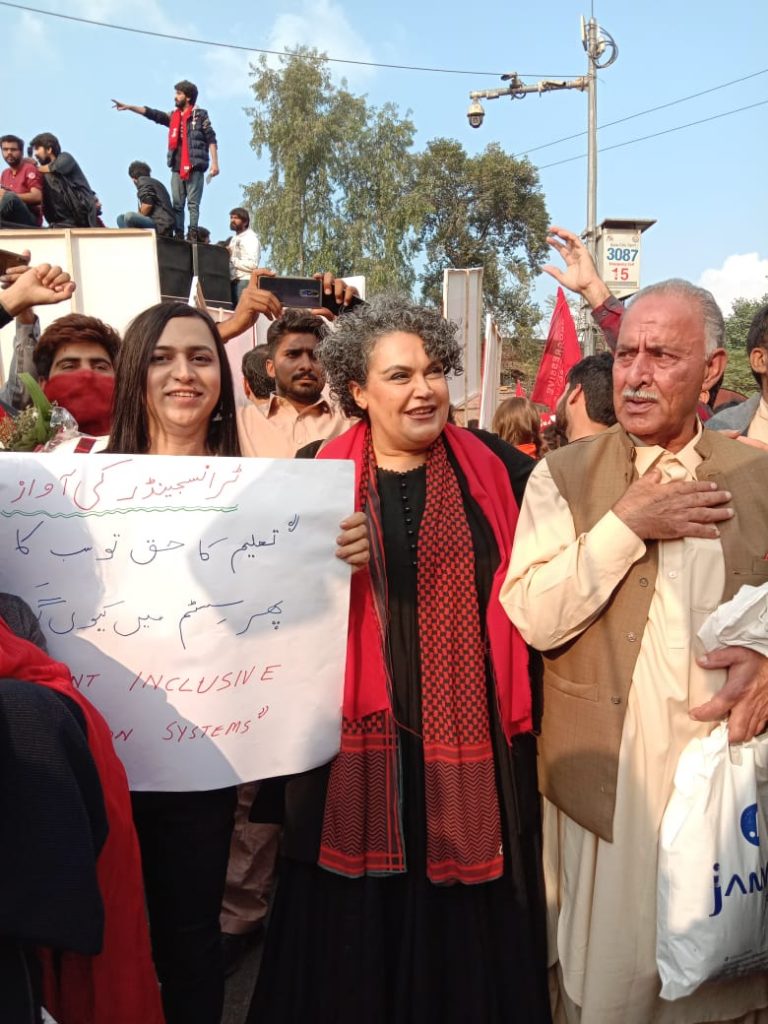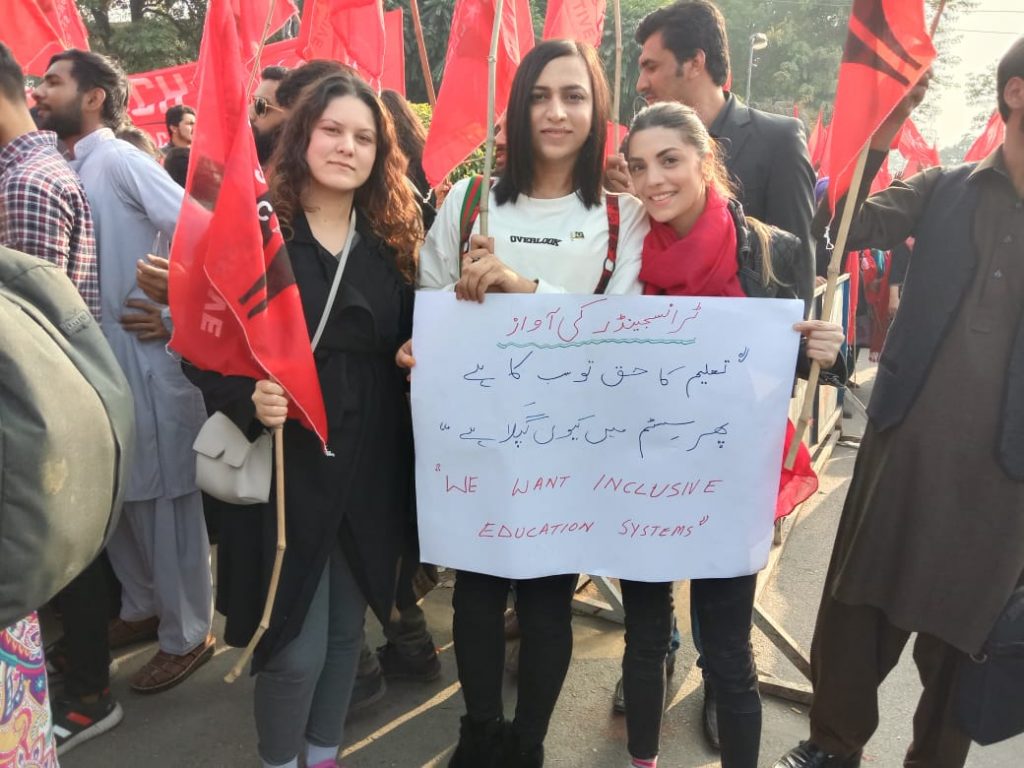Students, rights activists, lawyers, labourers and even politicians on Friday joined hands to hold countrywide Students’ Solidarity March as they raised awareness about what they called was the persisting “educational crisis” facing Pakistan.
Among many allegations leveled against the marchers, who were protesting against fee hikes and the policies affecting them, and were demanding a conducive educational environment, was that they were “driven by foreign powers” and were “being misused for someone’s vested interests”.
Eyebrows were also raised over the fact that major parts of the country turned red as people from all walks of life in over 50 cities took to roads; wearing red, holding daunting placards, raising full-throat slogans against the system and waving red flags.

Red is a colour long-misconstrued by many first-world countries and some like Pakistan — the ones that participated in the Soviet-Afghan War that insurgent groups fought against the Soviet Army and the Democratic Republic of Afghanistan government.
But while “Red Scare” is not a term unfamiliar to many, the colour red has a deep history that these students refer to and it is not all about the red flags that communists used.
Even though it is predominantly a symbol of socialism, communism and Marxism, it has been associated with left-wing politics since the French Revolution that overthrew the monarchy and established a republic in the late 18th century.
For these students, it signifies the blood of those spilt in acts of brute force anywhere in the world and the call for change in times of dire need. It signifies resistance.

“From Chicago’s Haymarket Square Massacre to people from the downtrodden segments of the society committing suicide in modern times, from people belonging to the Indo-Pak subcontinent who lost their lives in the World Wars to the farmers bearing the brunt of poor economic policies… it represents the blood of all those students who have ended their lives because of this rotten system,” said one student activist with a red scarf around his neck.
When asked about the person or entity they referred to while raising the slogan ‘jab laal laal lehrayega tab hosh thikanay ayega’, another student activist stepped up to clarify.
“We are addressing the ruling elite and referring to the industrialists who exploit the poor. We speak of administration of educational institutions that treat students like customers and have made campuses nothing less than prisons,” she said.
“None of them represent us, but they are the ones who rule us. We need better representation within the corridors of power. We… the people… the working class,” the activist maintained, adding that the colour red represented the power of the people.
STUDENTS’ SOLIDARITY MARCH:
Earlier, ministers, leaders of opposition parties, journalists as well as rights activists voiced their support for the marchers as the 2019 edition of the Students’ Solidarity March kicked off. The march was held in Karachi, Lahore, Islamabad, Rawalpindi, Quetta, Gilgit, parts of Khyber Pakhtunkhwa (KP), Azad Jammu & Kashmir (AJK) and interior Sindh.
They demanded the revival of student unions and solution to the problems being faced by them and their peers.
The protesting students said the Pakistan Tehreek-e-Insaf (PTI) government had left them dejected and directionless and reduced the higher education budget to almost half, bringing Pakistan into the list of countries that spend very less on education.







